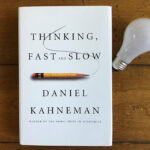Urban development, as everything in nature, follows certain rules. It is a question of time that science will find more laws about cities.
In the Universe there are humans, and in those humans there is a brain. And those countless human brains have invented many things along history. Amongst those things, striking indeed for its durability and success, are cities. It is no wonder that humans have always looked both to the deep outside and to the deep inside with awe, applying huge scientific and intelectual efforts to the formidable task of unveiling the misteries of the Universe and the brain. Now, long after the blooming of physics, astronomy, neuroscience or psychology, and influenced by the rapid urbanization of our planet, the eyes of science are starting to look around us: they are laid on cities.
It is fascinating how some of the laws about cities presented here come from fields as distant as physics, information theory or antropology, and how they can also be formulated to rule how cities are shaped, their interactions or their evolution. Give credit to a prominent city scientist like Michael Batty for collecting some of these laws, many of which the reader will reckon that respond to patterns that we observe in our daily errands or that just backup plain common sense.
Cities become more appealling as they become bigger. Yes, Metcalfe’s law, which was originally formulated to explain the value of telecom networks, can also be applied to cities. It basically says that the number of potential connections in a network grows with n2, being n the number of nodes in the network. The reason why digital businesses such as Facebook, Google or Whatsupp are, ab initio, free, has its roots in this well-known exponetial dependance. It looks that it also influences the “atractiveness” of cities.
Bettencourt-West Law about the wealth of cities. But, if in a telecom network everyone can communicate with everyone, interaction in cities is limited to our personal reach. Some say that we can not connect with more than 300 people, other argue that, by means of digital tools, this limit is higher. Either way, there is a factor β that depends on this limit and which softens Metcalfe’s law, conforming a new law that models the dependance of wealth over population (n):
wealth is proportional to β x n2
Zipf’s Law about the distribution of city sizes. This law states that, taking all the world cities ordered by size, the frequency of a given size is inversely proportional to its rank. Amazingly, Zipf’s law was originally formulated to address the frecuency distribution of words in human language. In its simplest terms, it basically says that it is rare to be big and very common to be small. It also explains why, in nature, there are far more ants than elephants. If we think further, it acts as a logical brake to the Bettencourt-West Law. Being a big metropolis, and hence appealling, and hence wealthy, is not an easy task. Cities face the crudest competition to be at the top.
Newton’s gravity. Given a person living in a point A of the Earth’s surface, and leaving other social and economic factors constant, the attractive force on his/her by a surrounding city is inversely proportional to the square of the distance and directly proportional to its population. This urban gravity force has a direct effect on migrations.
Alonso – Wilson’s Law about interactions between cities. In the same manner that cosmic bodies exert their mutual gravity attractions by the exchange of gravitons, cities interact with one another exchanging several types of particles: people, economic transactions, etc. Let IAB be the interactions between cities A and B, then
IAB is proportional to Size(A) x Size(B) / Distance (A->B)
Brand’s Law about greenness. This is an experimental law and mostly reflects a change in the way cities are designed today. It states that “as cities grows bigger, they also grow greener”. Counter-intuitive or not, there are several common-sense reasons supporting the empirical evidence. First, density leads to more efficiency and the oppositie, urban sprawl leads to more energy consumption. But also, a second degree effect of Bettencourt-West Law implies that, as cities grow bigger, they get wealthier, and a wealthier population will demand better quality of life, including a demand for a greener life.
The relations between streets, intersections and blocks. In any city, let S be the number of streets (or segments), I the number of intersections between two or more segments, and B the number of blocks, it holds that:
I – S + B = 1
Don’t be suprised, this is just Euler’s formula for planar graphs (as the street and block network) and can be easily checked.
This article is published under a Creative Commons license. Some rights reserved.
Photo by Michael Wu on Unsplash


















